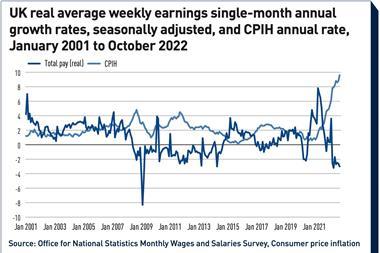After a year of anaemic growth – by China’s standards – we expect a recovery in Chinese economic activity to gradually take place in 2023
The Chinese government has now abandoned its zero-COVID policy and re-pivoted to growth, and the reopening, combined with a benign inflationary environment that gives China’s policymakers room to increase stimulus, is a reason for optimism in 2023. Nevertheless, major policy questions and geopolitical risks cloud the outlook.
The growth of real gross domestic product (GDP) in China amounted to 3% in 2022, which is China’s lowest in several decades, except for 2020, which was due to the first full year of the COVID outbreak.
While 3% growth compares well with developed economies, it is equivalent to a recession in China. Exports were quite strong in the first half of 2022, driven by both the global economic recovery and the Russia-Ukraine war (which exacerbated supply shortages and led to additional demands for Chinese exports).
In contrast, domestic consumption was very weak in 2022. This was primarily due to lockdowns under zero-COVID which created physical constraints on consumers and severely damaged consumer and business confidence.
At the start of last year, there were hopes that more fiscal stimulus or infrastructure spending would materialise, but this did not happen.
Given the lockdowns, and with local governments diverting resources to manage COVID, the government likely assumed that more aggressive spending would be ineffective. Investors did not expect the government would be so passive in dealing with falling property prices and so rigid in addressing COVID.
The property market could not make a comeback when public mobility is far below normal due to lockdowns and confidence is severed. This has wider repercussions with property being so intertwined with so many other economic sectors.
Even though Chinese interest rates declined in 2022, China’s equity market returns resembled what you would expect to see in a rising-rate environment. Higher-valuation, growth-oriented sectors dramatically underperformed lower-valuation, lower-quality stocks.
In addition, valuations for Chinese quality growth companies contracted dramatically in 2022. This combined with restrictions on consumption and economic activity and issues in the property market ensured a very challenging environment for investors focused on quality growth.

Divergence of attitudes
Looking forward, the Chinese government has now drastically abandoned its zero-COVID policy in the past couple of months, after three years of exhausting implementation.
The government probably understands it can’t afford to delay the reopening of the economy any further when economic data releases have been weak and people have been suffering from restricted mobility for too long. The policy direction, intensity, and speed stunned the markets.
This abrupt turn does not contradict the broader goals for Common Prosperity; it is just that the priorities have been reset and focuses rebalanced to tilt towards managing risk while restoring growth.
However, there was a divergence of attitudes within China’s vast population. The elderly and less urbanised populations, in general, are much more fearful of COVID and more suspicious of vaccines than younger and more urbanised groups.
This put the Chinese government in a difficult position. It may have vast authority and power, but it also has unlimited liability for protecting the public’s health.
In the near term, we expect disruption to the Chinese economy as a result of surging infections and increased deaths post-reopening. Once infections subside, economic activity should resume and recover throughout 2023, similar to the reopening experiences in other countries.
We are concentrating on re-opening as a key theme. The excessive savings built up, due to lockdown and closures, means that pent-up demand could be strong as the country continues reopening. I believe this should provide strong support for consumption recovery and GDP growth in 2023, forecast at about 5%, with potential upside.
Beneficiaries could be consumer, internet, and digital economy companies. We have exposure to quality growth companies in the consumer space – the leading liquor company, the leading duty-free company, the leading ingredients company, the leading cosmetics company, and so on. We believe they have the potential to benefit strongly as the reopening plays out and they are also attractive structural growth stories.
We also have substantial exposure to internet companies. These are currently out of favour among global investors, but we take a long-term view. Valuations now appear attractive and regulatory measures affecting these companies have been stabilising.
Looking past the underperformance of growth-oriented, higher-valuation companies in the past year, fundamental corporate earnings are already in recovery. If you combine earnings recovery with attractive valuations, a stabilising regulatory environment, and policy support, we believe 2023 may be a good year for quality growth investors in China.
Vivian Lin Thurston is partner and portfolio manager at William Blair































No comments yet